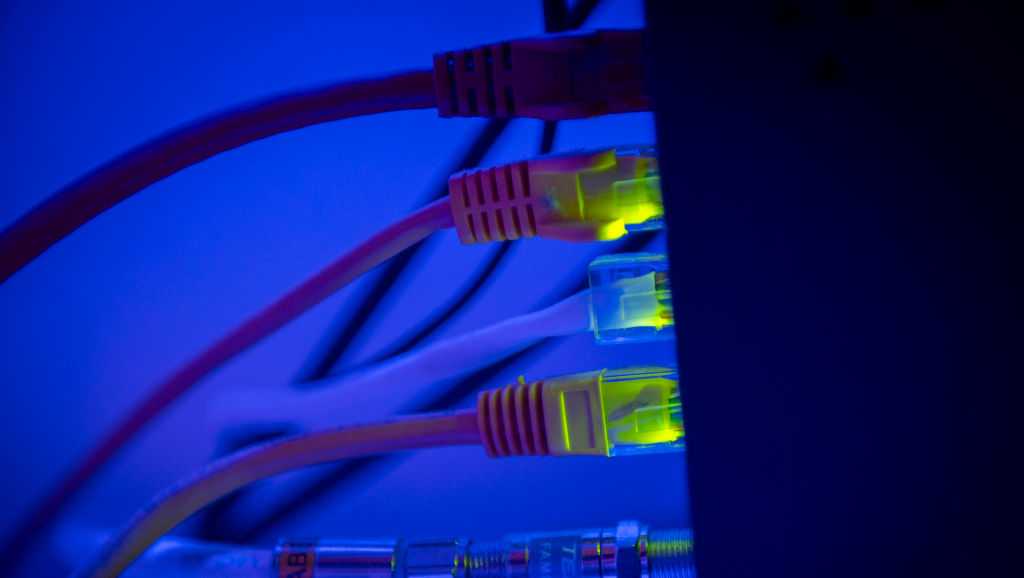Arkansas education advocate reacts to approaching expiration of Affordable Connectivity Program
Education advocate talks end of Affordable Connectivity Program 4029tv


Arkansas Receives $122 Million in Federal Funding for Internet Access

Arkansas has received more than $122 million in federal funding in recent years to provide internet access for those in need. This funding comes from the Affordable Connectivity Program, a bipartisan infrastructure law passed by Congress in 2021. However, these funds are set to expire on Wednesday.
Impact on Arkansas Families
The White House reports that the Affordable Connectivity Program has been instrumental in saving Arkansas families approximately $6.4 million each month on their internet bills. This program has particularly benefited students in low-income and rural areas by making it easier for them to access the internet and participate in educational activities.
“And with the loss of that, I’m concerned about students that won’t be able to connect anymore,” expressed April Reisma, President of the Arkansas Education Association.
Enrollment and Savings
Data provided by The White House reveals that over 215,000 households in Arkansas are currently enrolled in the Affordable Connectivity Program, which amounts to roughly one in six households. By participating in the program, families can save anywhere from $30 to $75 each month. The Arkansas Education Association emphasizes the importance of internet access for all students to ensure they are adequately prepared for college and the real world.
“We should not allow poverty to hinder anybody from learning or the potential to learn,” stated Reisma. “And as a state, it is our responsibility to provide an avenue for those students to be able to succeed.”
Continued Efforts and Priorities
Republican U.S. Senator John Boozman from Arkansas has expressed his commitment to prioritizing federal broadband investment in underserved areas. He acknowledges the significant resources allocated to connecting consumers and emphasizes the need to continue building on these efforts to deliver access to reliable internet service for rural citizens who currently lack it.
SDGs, Targets, and Indicators
-
SDG 4: Quality Education
- Target 4.4: By 2030, substantially increase the number of youth and adults who have relevant skills, including technical and vocational skills, for employment, decent jobs, and entrepreneurship.
- Indicator 4.4.1: Proportion of youth and adults with information and communications technology (ICT) skills, by type of skill.
-
SDG 9: Industry, Innovation, and Infrastructure
- Target 9.c: Significantly increase access to information and communications technology and strive to provide universal and affordable access to the internet in least developed countries by 2020.
- Indicator 9.c.1: Proportion of population covered by a mobile network, by technology.
- Indicator 9.c.2: Proportion of households with access to the internet.
-
SDG 10: Reduced Inequalities
- Target 10.2: By 2030, empower and promote the social, economic, and political inclusion of all, irrespective of age, sex, disability, race, ethnicity, origin, religion or economic or other status.
- Indicator 10.2.1: Proportion of people living below 50 percent of median income, by age, sex, and disability.
Table: SDGs, Targets, and Indicators
| SDGs | Targets | Indicators |
|---|---|---|
| SDG 4: Quality Education | Target 4.4: By 2030, substantially increase the number of youth and adults who have relevant skills, including technical and vocational skills, for employment, decent jobs, and entrepreneurship. | Indicator 4.4.1: Proportion of youth and adults with information and communications technology (ICT) skills, by type of skill. |
| SDG 9: Industry, Innovation, and Infrastructure | Target 9.c: Significantly increase access to information and communications technology and strive to provide universal and affordable access to the internet in least developed countries by 2020. | Indicator 9.c.1: Proportion of population covered by a mobile network, by technology. Indicator 9.c.2: Proportion of households with access to the internet. |
| SDG 10: Reduced Inequalities | Target 10.2: By 2030, empower and promote the social, economic, and political inclusion of all, irrespective of age, sex, disability, race, ethnicity, origin, religion or economic or other status. | Indicator 10.2.1: Proportion of people living below 50 percent of median income, by age, sex, and disability. |
Analysis
1. Which SDGs are addressed or connected to the issues highlighted in the article?
The issues highlighted in the article are connected to SDG 4: Quality Education, SDG 9: Industry, Innovation, and Infrastructure, and SDG 10: Reduced Inequalities.
2. What specific targets under those SDGs can be identified based on the article’s content?
Based on the article’s content, the specific targets identified are:
– Target 4.4: By 2030, substantially increase the number of youth and adults who have relevant skills, including technical and vocational skills, for employment, decent jobs, and entrepreneurship.
– Target 9.c: Significantly increase access to information and communications technology and strive to provide universal and affordable access to the internet in least developed countries by 2020.
– Target 10.2: By 2030, empower and promote the social, economic, and political inclusion of all, irrespective of age, sex, disability, race, ethnicity, origin, religion or economic or other status.
3. Are there any indicators mentioned or implied in the article that can be used to measure progress towards the identified targets?
Yes, there are indicators mentioned or implied in the article that can be used to measure progress towards the identified targets:
– Indicator 4.4.1: Proportion of youth and adults with information and communications technology (ICT) skills, by type of skill.
– Indicator 9.c.1: Proportion of population covered by a mobile network, by technology.
– Indicator 9.c.2: Proportion of households with access to the internet.
– Indicator 10.2.1: Proportion of people living below 50 percent of median income, by age, sex, and disability.
These indicators can be used to measure the proportion of individuals with ICT skills, the coverage of mobile networks, the proportion of households with internet access, and the proportion of people living below a certain income threshold.
4. Table: SDGs, Targets, and Indicators
| SDGs | Targets | Indicators |
|---|---|---|
| SDG 4: Quality Education | Target 4.4: By 2030, substantially increase the number of youth and adults who have relevant skills, including technical and vocational skills, for employment, decent jobs, and entrepreneurship. | Indicator 4.4.1: Proportion of youth and adults with information and communications technology (ICT) skills, by type of skill. |
| SDG 9: Industry, Innovation, and Infrastructure | Target 9.c: Significantly increase access to information and communications technology and strive to provide universal and affordable access to the internet in least developed countries by 2020. | Indicator 9.c.1: Proportion of population covered by a mobile network, by technology. Indicator 9.c.2: Proportion of households with access to the internet. |
| SDG 10: Reduced Inequalities |








